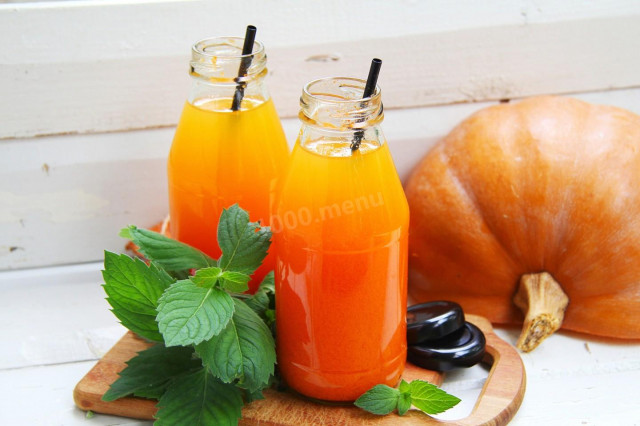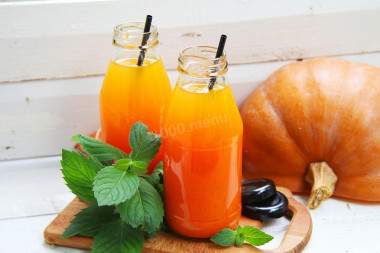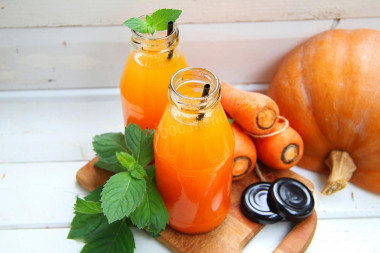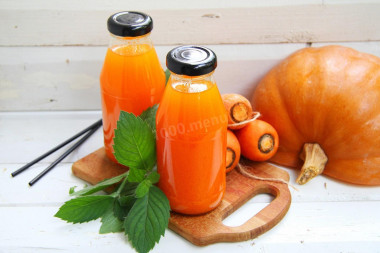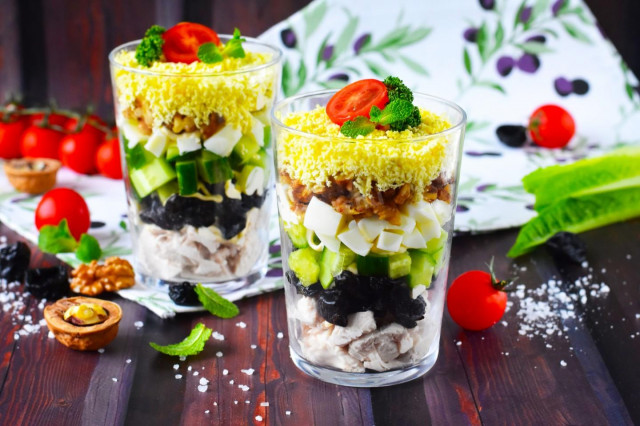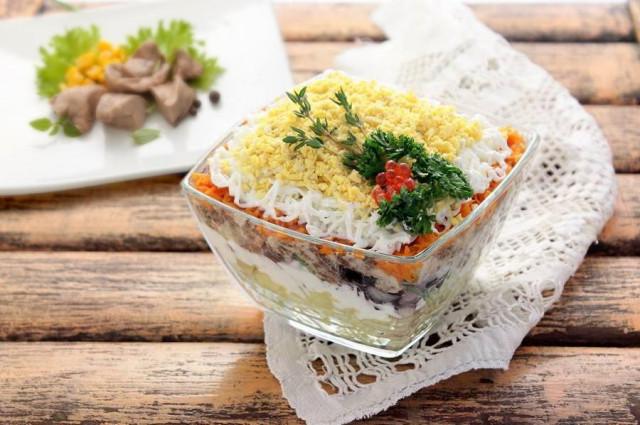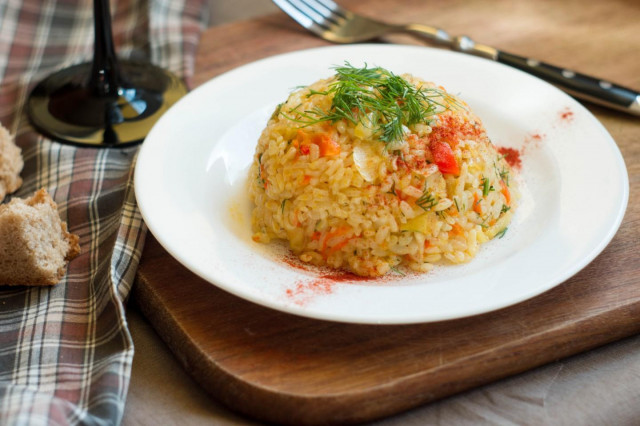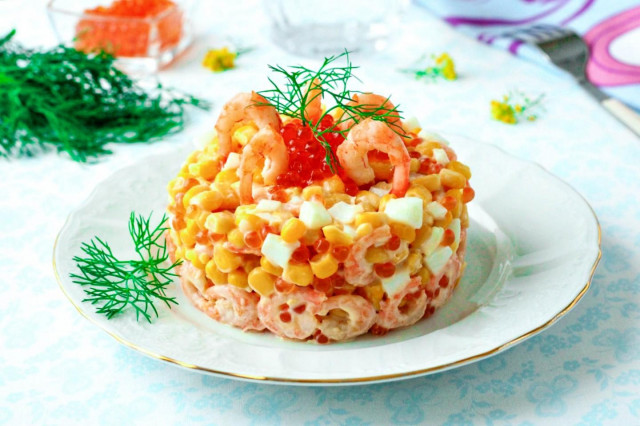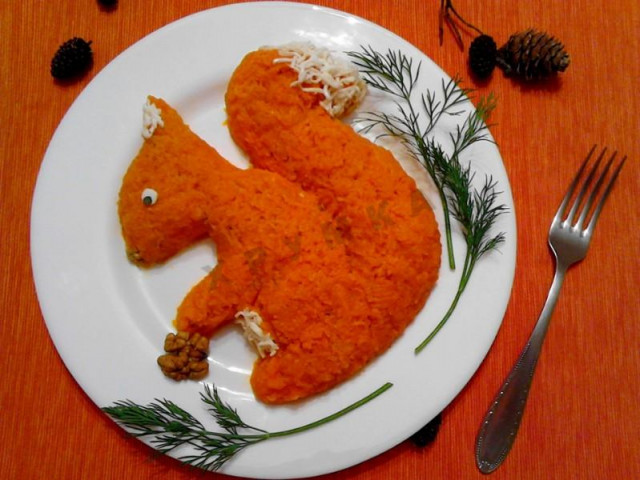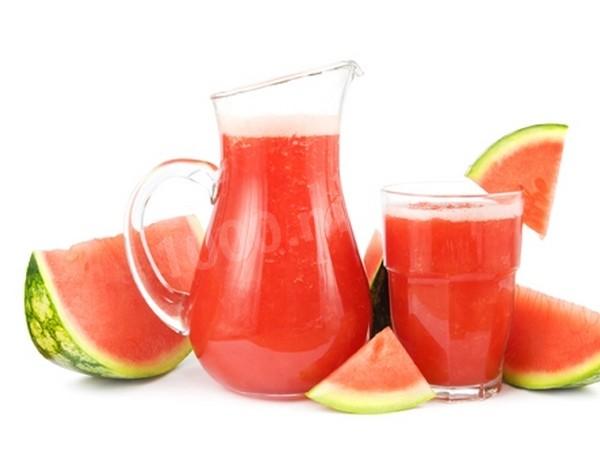Composition / ingredients
Step-by-step cooking
Step 1:
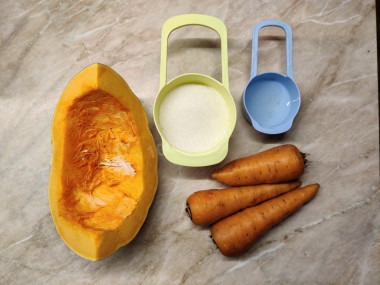
How to make pumpkin and carrot juice? Take a pumpkin of fresh harvest, it will be juicier than last year's. Carrots also need delicious and sweet. Wash the vegetables under running water. I take freshly squeezed lemon juice, but it will also be suitable for industrial production.
Step 2:
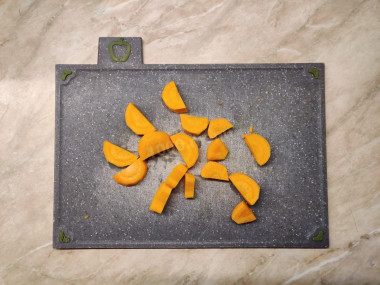
Peel the carrots and cut into medium-sized pieces. Transfer to a blender glass.
Step 3:
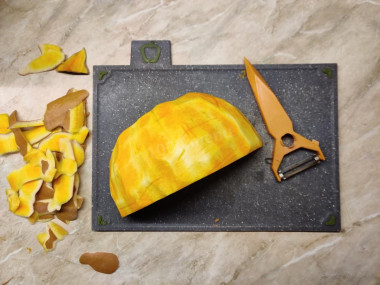
Peel the pumpkin from the peel and insides in the form of seeds. It's convenient for me to peel the skin with a vegetable peeler, but a regular knife will do. To remove the insides, an ordinary tablespoon will do.
Step 4:
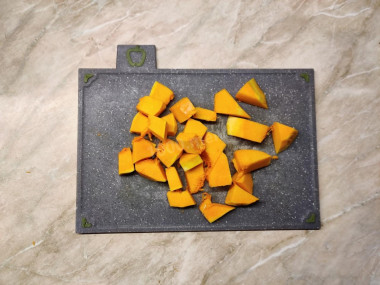
Also cut the pumpkin into arbitrary medium-sized pieces.
Step 5:
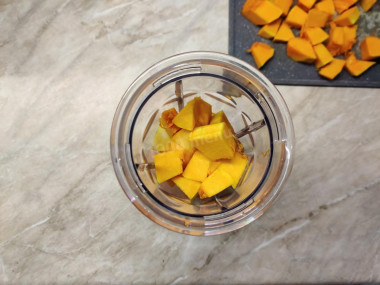
Put the pumpkin in a blender glass. Instead of a blender, you can use a juicer (this will be ideal).
Step 6:
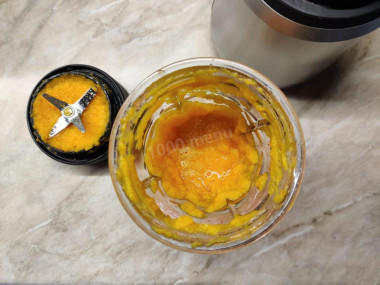
Grind the ingredients into a puree of a homogeneous consistency. The puree turns out to be thick, but this is understandable: pumpkin and carrots are not the juiciest vegetables.
Step 7:
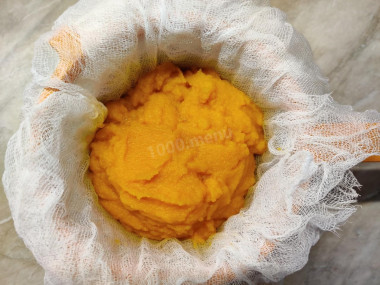
Fold the puree into a colander, covered with two layers of thick gauze.
Step 8:
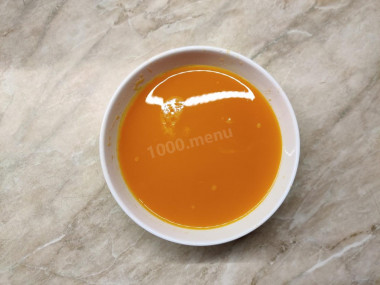
Squeeze the juice. I got about 500 ml. You need to try to make sure that you get the maximum amount of juice, but there was enough pulp in it. The fact is that if you lighten the juice too much, it will look ugly. The pulp will settle to the bottom, and there will be a transparent component on top. As if diluted with water.
Step 9:
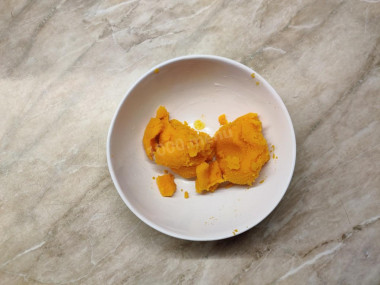
That's how much cake I got in the end. Leave it to regulate the density of the juice in the future, and the rest can be used in the preparation of millet porridge, for example.
Step 10:
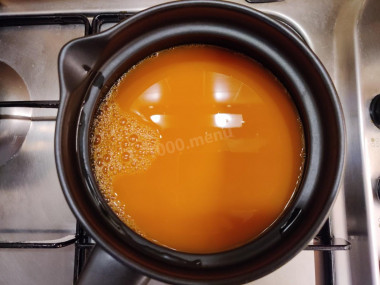
Pour the juice with the pulp into a thick-walled saucepan and bring to a boil over low heat. Evaluate the density of the juice. At this stage, it is possible to add a cake, if suddenly you have tried hard and squeezed it too much.
Step 11:
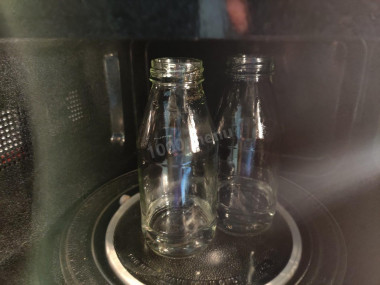
While the juice is boiling, sterilize the bottles (or cans) in any convenient way. I do this. I pour a centimeter of ordinary tap water into each and warm it in the microwave for 3 minutes at a power of 800 watts. The water should boil. Just pour boiling water over the lids.
Step 12:
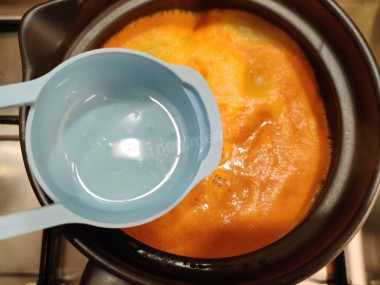
Add lemon juice to the boiling juice.
Step 13:
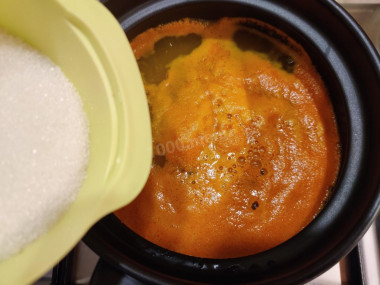
And sugar. The foam needs to be removed. Cook the juice for another 2-3 minutes until the sugar is completely dissolved. Try the drink, you can add more sugar. We proceed to the next step.
Step 14:
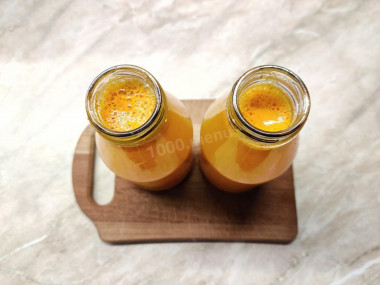
Bottle the juice and seal it with lids. In total, I got 2 bottles of 300 ml each. Then the bottles are turned upside down and wrapped in a warm blanket until completely cooled. After that, they are cleaned in a cool pantry.
The juice turns out fragrant and thick, with pulp. The pulp in the bottle can settle to the bottom, which indicates its naturalness and the absence of artificial dyes in the composition. Therefore, the juice is shaken before use. Pumpkin and carrot juice is especially good in chilled form.
Bon appetit!
Root vegetables are best washed with a brush or a hard sponge under running water.
Remember that spices such as salt, sugar, as well as vinegar and its substitutes are used in recipes for winter preparations not only for taste, but primarily as preservatives. Therefore, in no case should you reduce the concentration of salt and sugar, and also replace vinegar (essence) with a weaker concentration than indicated in the recipe, otherwise vinegar (salt / sugar) will not show their preservative properties and the workpiece will be spoiled.
How to calculate the number of cans, why banks explode and how to avoid it, as well as secrets and life hacks, read the article about preparations for the winter.
Caloric content of the products possible in the composition of the dish
- Pumpkin - 29 kcal/100g
- Carrots - 33 kcal/100g
- Dried carrots - 275 kcal/100g
- Boiled carrots - 25 kcal/100g
- Granulated sugar - 398 kcal/100g
- Sugar - 398 kcal/100g
- Lemon juice - 16 kcal/100g

